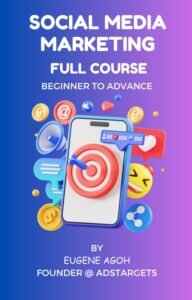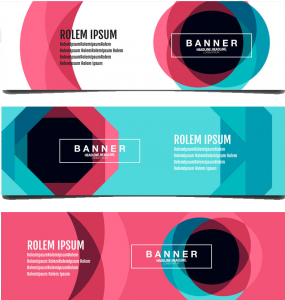There’s nothing quite like that rush you get when you tweak something on your online store and suddenly see sales rolling in faster. It’s like cracking a code—figuring out exactly what makes customers click that “buy now” button. But let’s be real, randomly changing a CTA color here or throwing in a new tagline there isn’t a strategy—it’s just guesswork. And guesswork leads to hit-or-miss results, which is the last thing you want when trying to grow your business.
If you want to see real, consistent growth, you need to take a smarter approach. That’s where e-commerce conversion optimization comes in. Instead of crossing your fingers and hoping for the best, CRO (Conversion Rate Optimization) gives you a data-backed game plan to turn browsers into buyers.
In this guide, we’re diving into why measuring your conversion rates matters, plus nine proven e-commerce conversion optimization tactics that can help you make impactful changes to your store. And to keep things even more practical, we’ll break down real-world examples of brands that nailed their CRO strategy. Let’s get into it.
Table of Contents
ToggleWhat’s E-commerce CRO?

E-commerce conversion optimization (CRO) is all about turning casual website visitors into paying customers. It’s the process of fine-tuning your online store to boost the percentage of people who actually buy instead of just browsing and bouncing.
Of course, sales are the ultimate goal, but e-commerce conversion optimization isn’t just about racking up purchases. It also means getting more people to add items to their cart, reducing cart abandonment, and making the entire shopping experience as smooth and irresistible as possible.
Think of it like this—your website is a storefront, and CRO is the secret sauce that keeps customers flowing through the doors and heading straight to checkout. It’s about tweaking the right elements, analyzing the data, and making smart moves to keep those sales numbers climbing.
Just having a pretty website isn’t enough. If visitors land on your store and don’t buy, you’re leaving money on the table. Maybe your checkout process is too complicated, your product pages aren’t convincing, or your site loads slower than a Monday morning. Whatever the reason, e-commerce conversion optimization helps you fix those issues so visitors don’t just leave—they buy.
CRO is the difference between a store that barely scrapes by and one that’s pulling in sales 24/7. It’s about understanding what works, testing what doesn’t, and making sure every visitor has a seamless, engaging, and convincing shopping experience.
E-commerce conversion optimization isn’t guesswork—it’s strategic. It’s about running A/B tests, analyzing user behavior, and optimizing everything from product descriptions to checkout buttons. You look at the data, find the friction points, and remove them one by one.
For example, if shoppers keep abandoning their carts, maybe your shipping costs are scaring them off, or maybe they’re getting lost in a complicated checkout process. Instead of assuming, CRO helps you pinpoint the exact problem and fix it.
Bottom line? CRO makes sure your website isn’t just attracting traffic—it’s making money. And that’s the whole point, right?
How to Calculate Your E-commerce Site’s Conversion Rate?

E-commerce conversion optimization (CRO) is all about improving your store’s efficiency—not just getting more visitors, but making sure more of them actually buy. It’s not just about traffic numbers; it’s about turning a higher percentage of those visitors into customers.
To track your progress, you need to know your conversion rate. Here’s how you calculate it:
(Total conversions ÷ Total visitors) × 100 = Conversion rate (%)
Let me break it down. Say your product page had 1,000 visitors last month, and 30 of them made a purchase. Your conversion rate would be 3%, which is pretty solid since most e-commerce stores fall between 2% and 5%.
You can crunch these numbers manually using Google Analytics (or any website analytics tool), but let’s be honest—why stress when you can automate it? Set up Google Analytics conversion events, and you’ll have real-time insights into how well your store is converting visitors into buyers.
Stop Guessing—Start Optimizing
Every e-commerce business wants more sales, but the mistake many make is randomly tweaking stuff—changing CTA button colors, rewriting headlines, or shuffling page layouts—without knowing why. This leads to trial-and-error chaos, with no real strategy behind the changes.
There’s a smarter way to do e-commerce conversion optimization. Instead of making random changes and hoping for the best, focus on what drives, stops, and persuades your users to take action.
Here’s the breakdown:
#1. DRIVERS: What brings visitors to your store? Who are they, where are they coming from, and what do they want?
#2. BARRIERS: What’s making them leave without buying? Is your checkout process too long? Is your site slow? Confusing navigation?
#3. HOOKS: What convinces them to buy? Are your product descriptions persuasive? Are your CTA buttons in the right spot?
By figuring out what motivates your customers, what frustrates them, and what converts them, you can create an e-commerce experience that makes buying effortless.
How to Apply This
Let’s say you want to boost conversions on your landing page. Instead of guessing, use heatmaps to track visitor behavior—see how far they scroll, where they click, and where they drop off. If people aren’t even seeing your CTA button, move it higher up the page. Small tweaks like this make a big difference.
E-commerce conversion optimization isn’t just about driving traffic—it’s about making every visitor count. When you fine-tune the shopping experience with real data, you’re not just increasing conversions—you’re making sure your customers actually enjoy the journey. And that’s how you build a brand that keeps them coming back.
What are Some Top Ecommerce conversion rate optimization strategies?

Beyond boosting revenue, ecommerce CRO helps teams understand their customers better, leading to smarter decisions about websites and products. For instance, if A/B tests consistently show that adding testimonials increases sales:
#1. Product marketers can incorporate customer stories into campaigns.
#2. Product managers can ensure social proof is included on new product pages.
When working to improve your ecommerce conversion rate, focus on the drivers, barriers, and hooks rather than tackling the entire customer experience at once—it’s way less overwhelming that way.
To break it down even further, use three research methods: observe, ask, and engage. Combining data from surveys and heatmaps with real customer insights from interviews helps you spot opportunities faster.
Here’s how it works:
#1. WATCH HOW CUSTOMERS MOVE—THEN MAKE NAVIGATION EFFORTLESS
E-commerce conversion optimization is basically the battle between what you think will work and what actually works. Sometimes, the smallest details can make or break your sales, and the only way to know for sure is by watching how customers behave on your site.
Take Shopify store owner Andrew Ethan Zeng, for example. He had a flashy banner at the top of his page, purely for aesthetics. But when he checked user recordings, he saw tons of visitors trying to click on it—assuming it was a link to a sale. Realizing the missed opportunity, he made the banner clickable and boom—conversions skyrocketed! Hundreds of orders came through just from that one tweak.
The lesson? Your website should match your customers’ expectations. If they think something is clickable, make it clickable. If they expect a quick checkout, don’t make them jump through hoops.
What Are CRO Tools?
E-commerce conversion optimization is all about understanding your customers—what confuses them, what excites them, and what makes them hit “Buy Now”. That’s where CRO tools come in.
These tools help you make data-driven decisions by showing you:
✅ Why visitors aren’t converting into customers
✅ What site changes could increase your conversion rate
✅ How well your tweaks actually work in real time
How Do CRO Tools Work?
CRO tools give you behind-the-scenes access to how customers actually interact with your site. No more guessing games—just solid data. Here’s what they offer:
#1. Session Recordings: Watch real users scroll, pause, struggle, u-turn, or rage-click when something isn’t working. (If people keep clicking a non-clickable section, that’s a problem.)
#2. Click Heatmaps: See exactly where people tap, click, or ignore on your pages. If your CTA button is collecting dust while users are clicking elsewhere, it’s time to reposition it.
#3. Form Analytics: Track where customers drop off in your checkout process. If people abandon their carts when you ask for too much info, you know where to cut the fluff.
These tools take the guesswork out of optimization and show you what’s working (or flopping) on your site. And that’s just the beginning. Mastering e-commerce conversion optimization means constantly refining your site based on real data—not just hunches.
Bottom line? If you’re not tracking and tweaking, you’re leaving money on the table.
#2. ASK CUSTOMERS HOW THEY FOUND YOU—THEN USE THAT INFO TO BOOST SALES

E-commerce funnels are messy. People don’t always take a straight path from discovery to checkout—some research for months, some stumble upon your store by accident, and others land there because a friend raved about your products. If you don’t know where your visitors are coming from, you’re basically flying blind when it comes to optimizing your site.
That’s why asking customers how they found you is a game-changer for e-commerce conversion optimization. When you know what’s driving traffic, you can:
✅ Tailor your content to meet visitor expectations
✅ Double down on what’s working (and stop wasting time on what’s not)
✅ Deliver a more personalized experience that nudges visitors toward buying
How to Collect This Info? Ask Them Directly!
One of the easiest ways to get real, actionable insights is through on-site surveys. A simple pop-up or embedded question on key pages can give you golden nuggets of data you wouldn’t have gotten otherwise.
Here are some questions you can ask:
#1. How did you hear about us? (Social media? Google search? A friend?)
#2. What made you check us out today? (Research? Sale? Random scroll?)
#3. What’s your main goal for using [product name]? (Strength-building? Weight loss? Convenience?)
Why This Data Is So Powerful
Trends in survey answers can expose gaps in your marketing and messaging. Let’s say you sell home gym equipment, and most responses say customers are looking to build strength—but your landing page is all about weight loss. That’s a disconnect. Fixing your messaging to match user intent could instantly improve conversions.
#3. TALK TO YOUR CUSTOMERS—THEIR INSIGHTS CAN SKYROCKET YOUR SALES
E-commerce conversion optimization doesn’t end once you make a sale. If you want to keep leveling up, you need to dig into the “why” behind customer decisions. That’s where user interviews come in.
Talking directly to your customers helps you:
✅ Fine-tune your product messaging to match real customer needs
✅ Optimize your marketing funnel so it attracts the right people
✅ Stand out from competitors by highlighting what actually matters to buyers
Here’s what you should ask:
#1. What Made You Seek Out This Product?
Understanding what triggered the purchase lets you position your product in a way that speaks directly to potential buyers.
For example, if a ton of customers say they buy your tote bags right before a vacation, that’s a golden opportunity to:
🎯 Partner with travel bloggers who can drive high-intent traffic your way
🎯 Optimize your product descriptions with vacation-friendly keywords
🎯 Run targeted ads on social media around peak travel seasons
This is how e-commerce conversion optimization works—it’s not about guessing what customers want; it’s about knowing and acting on it.
#2️ How Did You Compare Your Options?
Your customers don’t shop in a vacuum. They’re out there weighing their choices, checking reviews, and comparing prices before they commit. When you know what factors matter most to them, you can refine your unique selling proposition (USP) to hit those pain points directly.
If customers say they chose your skincare brand over a competitor because your ingredients are cleaner and more natural, then that should be front and center in your marketing. Not price. Not packaging. Just the clean ingredients.
#3. Where Do You Research Before Buying?
Knowing where your customers look for product info is key to placing your brand in the right spots. Some might rely on:
🎯 Google searches → Time to optimize for SEO
🎯 Social media & influencers → A solid influencer marketing strategy is a must
🎯 Word-of-mouth & forums → Encourage user-generated content and referrals
If you’re spending all your marketing dollars on Google Ads, but your audience is making purchase decisions on Reddit and TikTok, you’re missing out on conversions in a big way.
Turn These Insights Into Higher Conversions
The best e-commerce stores don’t just sell—they listen, learn, and adjust. E-commerce conversion optimization isn’t about random tweaks; it’s about understanding customer motivations and giving them exactly what they need at the right time.
So, start talking to your customers. Their insights could be the key to turning more visitors into buyers—and keeping them coming back for more.
Or maybe most people say they found you through TikTok, but you’ve been pumping money into Google Ads instead. That’s your cue to shift resources to what’s actually driving traffic and sales.
This is how e-commerce conversion optimization works—it’s not about wild guesses or gut feelings. It’s about real data that tells you what’s working and what needs tweaking. The more you understand why customers land on your site, the easier it is to turn visits into sales.
#4. KEEP AN EYE ON YOUR CHECKOUT FLOW—IT COULD BE YOUR HIDDEN CONVERSION KILLER

You might think you’ve nailed the ecommerce customer experience (CX) by designing the perfect website. But no matter how much you try to step into your customers’ shoes, seeing their actions live is a game changer.
Take Materials Market, a UK-based construction materials ecommerce site. They thought they had a solid checkout process—until they started watching Hotjar Recordings and saw customers getting stuck.
The Problem: Too Many Steps in the Checkout Process
Andrew, the Operations Manager, shared his aha moment: “I noticed customers were confused and frustrated. The process was taking way longer than it should have, and we were asking too much from them at once.”
The result? A whopping 25% of customers ditched their carts before completing the purchase.
The Fix: Streamline the Process with Data-Backed Updates
Instead of guessing what was going wrong, Materials Market got smart and leaned into e-commerce conversion optimization. They analyzed the recordings, then took action:
#1. Shortened the checkout journey – No more multiple pages to fill out!
#2. Consolidated customer details – All the necessary info was collected in one pop-up modal, cutting out unnecessary clicks.
#3. Updated copy – They swapped “Sign Up” with “Secure Checkout,” making it feel more urgent and secure for buyers.
The Result: Skyrocketing Conversions 🚀
Once these changes were implemented, conversion rates shot up by 28%! And instead of 1 in 4 customers abandoning their cart, now it’s just 1 in 25.
Moral of the Story?
It’s easy to assume your checkout process is smooth, but don’t leave it to chance. E-commerce conversion optimization thrives when you observe actual customer behavior, identify friction points, and make smart, data-backed updates.
Every extra step in the process could cost you sales. So, take a good look at how users navigate your site and start making real-time adjustments that keep the sales flowing. You’ll be surprised at how little changes can lead to big wins.
#5. SURVEY VISITORS WHO ARE ABOUT TO BOUNCE—GET THE REAL SCOOP ON WHY THEY’RE NOT BUYING
When it comes to ecommerce conversion optimization, understanding what’s stopping a sale before it even happens is key. That’s where exit-intent surveys come in. These surveys are your chance to ask visitors what’s holding them back—just before they bail on your site.
Sure, one exit survey response won’t change the world, but by running these surveys consistently, you’ll start spotting trends and uncovering hidden friction points in your ecommerce experience.
For example, if you suddenly see a surge of complaints about your site being “hard to navigate”, it’s a red flag that there’s something buggy going on behind the scenes—fix it ASAP!
What Do Different Exit-Intent Responses Mean for Your CRO Strategy?
#1. “I didn’t find what I was looking for”
Looks like your user interface (UI) might need a little TLC. If users can’t easily find what they came for, your site’s navigation could be the culprit. Take a closer look at recordings and click heatmaps to figure out where users are hesitating. Maybe your product categories aren’t as clear as you thought.
#2. “I didn’t find the website easy to use”
Ouch. That’s a warning sign! Visitors are rage clicking, which means they’re getting frustrated. Watch those recordings again and look for areas where people drop off or get stuck. There could be a button or image that looks like it’s clickable but does nothing—that’s a huge UX (user experience) fail.
#3. “It was too expensive for me”
If this is a common response, it’s time to reconsider your pricing strategy. Are you targeting the right audience? Maybe you’re attracting budget-conscious shoppers, but your prices are positioned higher than they’re willing to pay. This is a great opportunity to assess how your prices compare to competitors and consider offering discounts or deals that make your products feel like a better value.
Why These Surveys Are a Booster for E-Commerce Conversion Optimization
These surveys aren’t just about gathering complaints. They’re gold mines of feedback that help you fix issues and smooth out your entire customer journey. When you act on the trends you see, you can optimize your site to eliminate friction and make the buying process smoother and more seamless.
So, don’t let those exit-intent opportunities slip by—use them to make real-time tweaks to improve your conversion rate. The more you listen to your visitors, the better you can meet their needs and keep those conversion rates climbing.
#6. CHAT WITH CUSTOMERS ABOUT WHAT YOUR ECOMMERCE EXPERIENCE IS MISSING

Sometimes, your analytics and heatmaps only tell you half the story—the numbers are great, but they don’t capture the real human experience. That’s where customer interviews come in. They give you qualitative insights that help you understand why your visitors bail or don’t convert, beyond just “oh, they dropped off at checkout.”
For example, analytics might show you that a specific product page has a high drop-off rate, or heatmaps will show where people stop clicking, but those metrics don’t give you the human touch. You need to actually talk to your customers to figure out why they left. Maybe they felt your website design was sketchy and didn’t inspire trust, or maybe they almost bought something, but once they got to the final step, they saw shipping fees pop up unexpectedly, and it felt like a bait and switch.
That’s why customer interviews are so important for ecommerce conversion optimization. They give you the full picture and help you uncover friction points you can’t see in the data alone.
Once you know what’s causing the roadblocks, you can start making changes. Maybe your UI design needs a makeover to build trust—like using better visuals, reviews, or trust badges. Or, maybe you need to show shipping options upfront so your customers don’t feel like they’re being tricked when they see extra costs later. The goal is to make sure your visitors feel in control of their shopping journey and, most importantly, that they’re not being blindsided by hidden fees or shady vibes.
By talking to your customers, you get the real deal, so you can make changes that directly impact your conversion rate. It’s not just about optimizing for clicks—it’s about creating an experience that makes people feel good about buying from you. And that’s how you boost those sales and keep customers coming back.
#7. MAKE SURE YOUR VISITORS SEE THAT CTA BUTTON
Your call-to-action (CTA) is the secret sauce that pushes people down the conversion funnel, but here’s the thing—if they can’t see the button, they can’t click it! Simple, right?
Take Trampoline Plezier, for example. They used heatmaps and realized something pretty eye-opening: only 46.2% of visitors were even seeing their main CTA button. That’s a major problem! If half of your visitors don’t even know where to click, you’re missing out on a ton of potential sales. So, they moved that CTA button higher up the page, and boom—the conversion rate jumped from 21.8% to 33.02%. That’s a solid e-commerce conversion optimization win!
If you notice that people aren’t getting to the bottom of your sales page, it might be time to rethink the layout. Don’t let important info, like your CTA, hide at the bottom where people might miss it. Instead, think about moving key content higher up or finding ways to keep visitors engaged as they scroll. Maybe throw in some eye-catching visuals, offer helpful snippets, or break up content into bite-sized chunks. Engagement is key—the more people interact with your page, the more likely they’ll notice your CTA and follow through.
In e-commerce conversion optimization, making sure your CTA is visible and easy to find is a no-brainer. Keep it simple, clean, and right in their face—because if people can’t see it, they can’t click it, and you’ll be leaving money on the table.
#8. ASK CUSTOMERS WHAT ACTUALLY CONVICES THEM TO BUY
Wanna know what really makes customers click “buy”? Don’t guess—ask them! And one of the best ways to do this is by using a Net Promoter Score (NPS®) survey. It’s like a little hack to find out how into your brand your customers are.
Start by asking your customers to rank how likely they are to recommend your product on a scale of 1–10. Once you get their score, hit them with this question: “What was the main reason for your score?” This is where you uncover the real hooks that make them tick.
Let’s say a customer raves about how your products are backed by scientific research. Guess what? You can turn that into gold by showcasing expert quotes on your sales pages. That’ll speak directly to new customers who care about that trust factor. Or, maybe someone gave you a high NPS because they love how fast and reliable your shipping is. Well, now you know to highlight shipping info early in your checkout process—because timing matters.
This approach is pure e-commerce conversion optimization magic. By listening to your customers, you not only learn exactly what they love about your product but also get to tweak your sales strategy and marketing to make those things pop. Feature what works, put it front and center, and you’re creating a smoother journey for future buyers.
So, next time you wanna optimize your conversion rates, remember: customer feedback is your best friend. Use it to make your pages more persuasive and turn those visitors into repeat customers.
#9. LISTEN TO AND OBSERVE CUSTOMERS TO WRITE KILLER SALES COPY
When it comes to e-commerce conversion optimization, it’s not just about building a great product. It’s about making sure your sales copy speaks directly to your audience, and that’s where team collaboration really shines.
Think about it like this: you’ve got your product marketers diving deep into customer interviews, your product managers watching how those messages perform on-site, and the devs fine-tuning the user experience. It’s a well-oiled machine of customer insights, all aimed at one thing—getting more conversions.
Let’s break this down with a real-life example. Picture a beard-care brand. The product marketers sit down with customers and find out two key things: Customers love how the product helps them keep their beards looking sharp for work, and their partners are all about those soft, well-conditioned beards. Gold mine.
Now, the product managers come in and do their thing. They test two different sets of sales copy and CTAs—one highlighting the work-ready, polished look, and the other focusing on the partner-approved softness. They then track which copy gets more love by checking heatmaps to see where people are engaging and which part of the page holds attention longer.
The result? They get hard data on what messaging actually works. They can now improve their site’s conversions based on what real customers care about, and that information gets fed back to the marketing team to tweak the sales funnel even further.
That’s the power of using customer insights for e-commerce conversion optimization. By listening to your customers and observing how they interact with your content, you can write sales copy that hits home and gets people clicking “buy” faster. So don’t just guess what they want—ask, listen, and watch. Your customers will guide you to more conversions.
#10. ADD TRUST SIGNALS FOR A SECURE FEEL
When it comes to e-commerce conversion optimization, one thing you can’t overlook is building trust with your customers. We all know that the more secure someone feels about their purchase, the more likely they are to follow through. So, adding trust signals—like SSL certificates, site seals, and payment security logos—is essential for boosting confidence during the checkout process.
Here’s the thing: even though you might be offering the best products at the best prices, if a customer doesn’t feel secure while checking out, they’re out the door. And we’re not talking about security just in the technical sense; a lot of it comes down to gut feeling. That’s right—your customers’ perception of your site’s security is often shaped by how “safe” it visually looks. Sounds odd, right? But it’s true.
From all the tests we’ve run on checkout pages, we’ve noticed some interesting trends: some areas of a page seem way more trustworthy than others, based purely on design. It’s like when you walk into a store, and the sleek, polished section of the shop just feels more legit than the messy, cluttered one. That’s how people process trust online too.
Let’s take a deeper dive into the trust signals that really work. Through Baymard’s extensive research, we discovered which site seals and security badges people trust the most when they’re about to hand over their credit card details. It turns out not all badges are created equal—some are way more effective than others at reassuring customers that their payment info is safe.
So, if you want to take your e-commerce conversion optimization to the next level, don’t just throw up any random seal on your site. Make sure the ones you choose are visually recognizable and trusted by your audience. When customers see that SSL certificate or that trusted payment badge, their gut feeling shifts from hesitation to confidence, and they’re far more likely to complete their purchase.
Bottom line? Trust signals aren’t just nice-to-haves. They’re essential for converting browsers into buyers, and a little strategic placement can go a long way in making sure your customers feel secure from start to finish.
#11. IMPROVE PRODUCT PHOTOGRAPHY TO BOOST CONVERSIONS

If you’ve ever tried to buy something online and had to squint at a blurry image, you know exactly how frustrating it can be. It’s like trying to shop in a store with no proper lighting—you’re not going to trust the product, and you’re definitely not going to buy it. That’s exactly why product photography is one of the most crucial elements of e-commerce conversion optimization.
When it comes to product images, quality is everything. A blurry shot of a laptop backpack or a low-res image can totally kill a sale. Think about it: your customers are counting on those pictures to tell them if they’re making the right choice. If your images are fuzzy, cropped weirdly, or just too small to zoom in on, you’re sending the wrong message. Users associate high-quality visuals with trust and professionalism, so skimping on this could cost you big time.
Take Baymard’s research, for example. During their usability tests, a massive 56% of users immediately started checking out product images as soon as they landed on an e-commerce page. That’s a huge chunk of potential buyers, right? But here’s the kicker—low-quality photos or images that customers couldn’t zoom into caused a big spike in cart abandonment. So, if your images aren’t up to par, you’re literally leaving money on the table.
The solution is simple: invest in high-quality, clear images that allow users to zoom in and inspect the product from every angle. When customers can get a close look at the details, they feel more confident in their purchase, which can directly impact your conversion rates. Plus, images that accurately represent your product are key for building trust and making your site feel more reliable.
In short, if you’re serious about e-commerce conversion optimization, make sure your product photography is on point. It’s one of the easiest ways to improve your user experience and drive those conversions. So, take the time to update your photos—your customers will thank you for it, and so will your sales.
#12. ALWAYS LABEL BOTH OPTIONAL AND REQUIRED CHECKOUT FIELDS
Alright, here’s a simple but super effective e-commerce conversion optimization tip that a lot of online stores overlook: always label both required and optional checkout fields. You’d think this is a no-brainer, but surprisingly, only about 24% of sites actually do it. And trust us, not doing this can seriously hurt your checkout flow.
We’ve been running tests on checkout processes for years, and this small fix keeps popping up as a major win for e-commerce stores. If you don’t clearly label which fields are mandatory and which are optional, it can lead to all kinds of headaches for your customers. They end up getting confused, making mistakes, and skipping necessary info, which triggers validation errors. And guess what happens next? A frustrated user will bail on their cart, leaving you with abandoned orders and lost sales.
It might seem like a tiny detail, but it’s a big deal in e-commerce conversion optimization. When customers aren’t sure about what’s required, they’re more likely to mess up their checkout details. And every little hiccup in the process makes your customers more likely to abandon ship.
So, here’s the fix: clearly mark both required and optional fields. It takes just a few extra seconds, but it saves your customers time and frustration. Plus, it helps streamline the process and reduces errors. Simple changes like this make a huge difference in conversion rates, so don’t sleep on it!
At the end of the day, making sure your checkout is smooth and intuitive is key to keeping customers happy and boosting sales. By labeling both required and optional fields, you can improve the user experience and keep people moving through your checkout funnel without unnecessary friction.
#13. STREAMLINE MOBILE PAYMENTS
If you’ve got a mobile store, here’s a power tip for e-commerce conversion optimization: make your payment process super smooth and straightforward for mobile users. We all know that mobile shopping is huge these days, but a lot of stores still drop the ball when it comes to making mobile payments easy.
During our usability testing on mobile checkouts, we noticed a common issue — Payment Method selection can get messy and frustrating for users. A lot of sites still show a bunch of payment options, like credit cards, PayPal, Apple Pay, and others, all crammed onto a small screen. It’s kind of like trying to choose from a buffet when you’re starving, but the options are too many and you can’t even see them clearly.
Having all those options is great in theory, but when your user has to scroll through too many choices on their phone, it can be overwhelming. They get confused, they second-guess their decision, and boom – they abandon their cart. Not the outcome you want, right?
For better e-commerce conversion optimization, think about simplifying the mobile payment experience. If you offer multiple payment options, try showing the most popular or preferred ones front and center and minimize clutter. Make it easy for users to select their payment method without feeling like they’re being bombarded with choices. Streamline the process, make it quick, and keep it simple. This small tweak could be the difference between a completed sale and a lost customer.
So, take a step back and look at your mobile checkout flow. Is it intuitive, easy to navigate, and free of distractions? If not, it’s time to streamline the mobile payment process. A smoother, simpler experience will lead to fewer abandoned carts and higher conversion rates – and that’s the ultimate goal.
#14. HIDE COUPON & PROMOTIONAL FIELDS BEHIND A LINK
Here’s a sneaky little e-commerce conversion optimization trick that could seriously improve your checkout experience: hide those coupon and promotional code fields behind a simple link. It might sound weird at first, but trust me, it works!
Take Adidas, for example. They give users the option to enter a promo code during checkout. But here’s the thing – it’s there, but not in your face. The field is visible, but it’s collapsed to minimize the focus and keep things streamlined. This is a subtle move, but it works wonders in reducing checkout abandonment.
Through some eye-tracking tests, we found that empty form fields – like the “Coupon Code” field – pull way too much attention. When people see that empty field, it often triggers “coupon hunting,” which leads to a distraction. If shoppers see a spot for a coupon code, they instantly start thinking they’re missing out on a deal. It’s like, “Wait, I’m paying full price? There must be a code out there!” That can lead to frustration and ultimately abandonment.
One user even commented: “I find it a bit annoying how these coupon code fields are shoved in my face, like I’m supposed to have a secret discount. I don’t know any code!”
So, what’s the fix? It’s simple – collapse coupon and promo fields behind a link. And make sure the link is secondary to the main checkout flow. For example, place it below the credit card form, where it’s still accessible if the user wants it, but not nagging them throughout the process. This way, it’s there when they need it, but not getting in the way when they’re focused on completing their purchase.
By implementing this, you help users feel more relaxed and focused, without the constant pressure of “Did I miss a promo?” It keeps the checkout process neat, clean, and optimized for e-commerce conversion. After all, the goal is to keep your users moving toward the checkout without distractions.
#15. AUTOCOMPLETE FIELDS NEED TO WORK PROPERLY
Let’s talk about something that can really mess up your e-commerce conversion optimization: autocomplete fields that don’t work right. It’s frustrating, and users can totally bounce if things aren’t running smoothly. If autocomplete isn’t working properly, or worse, if it can’t handle basic things like misspelled words, you’re in trouble. Imagine a user trying to find a product and they misspell something – if your site doesn’t pick it up or provide relevant suggestions, that’s a major usability issue. What happens? They give up, frustrated, and maybe even abandon their cart entirely.
So, what can you do? First off, make sure that autocomplete is smooth and reliable. When a user types something in the search bar, give them suggestions that are not only relevant but also tolerant of minor errors. You don’t want a simple typo to stop them from finding what they need. A solid search function means your customers can easily find their products without getting frustrated or lost. This is key for e-commerce conversion optimization – every little detail matters when it comes to guiding users smoothly through the buying journey.
Also, test your search fields regularly. If a product name is too long or the autocomplete suggestions don’t match the most popular searches, it’s time for an update. The goal is for customers to feel like they’re in control and aren’t wasting time looking for something that should be right in front of them. In the end, making the search experience as seamless as possible will definitely help boost those conversion rates!
4 Common CRO Mistakes and How to Steer Clear of Them
Avoiding common pitfalls in ecommerce CRO can have a huge impact on your conversion rates and sales. Stay on track by steering clear of these four mistakes:
#1. Not Having Clear KPIs for Your CRO Project
If you’re diving into your e-commerce conversion optimization project without setting clear KPIs (Key Performance Indicators), you’re basically setting yourself up for a mess. Trust me, without a roadmap, your team could easily lose focus, and it’s going to be tough to track any meaningful progress. You might be tweaking things left and right, but without those solid KPIs, how will you even know if those changes are working? And good luck trying to show stakeholders the impact of all your hard work – it’ll be hard to make your case for more resources or buy-in.
Always set clear KPIs from the get-go. You want to have benchmarks for both macro-conversions (like the big wins, such as customers completing a purchase) and micro-conversions (the smaller wins, like people adding items to their cart, watching a product demo video, or signing up for your newsletter). The key is to set specific targets for each one. Maybe you aim for a 5% increase in macro-conversions over the next six months.
This isn’t just about numbers for the sake of numbers – having concrete KPIs helps you stay laser-focused on what truly matters for your e-commerce conversion optimization goals. Plus, it gives you a way to track if all the tweaks you’re making are actually moving the needle, rather than just hoping for the best. With clear KPIs in place, you’ll have a way to measure success, show progress, and rally the team behind a unified goal. So, don’t skip this step – it’s how you turn all that CRO effort into results.
#2. Testing Without a Roadmap
Running e-commerce conversion optimization tests without a solid roadmap is like driving without a map—you’re just hoping you end up somewhere good. And guess what? You probably won’t. If you dive in without thinking things through, you risk getting unreliable results. Take timing, for example. If you run tests during a high-demand period like the holiday season, you might end up seeing little to no difference between your variations and the control because, let’s face it, people are already in a “spending mood” during those times. So, your results won’t actually tell you what’s working and what isn’t.
To avoid this mess, you need a clear testing roadmap. Think of it as your GPS for success in e-commerce conversion optimization. By planning ahead, you can ensure your tests are scheduled during the right periods and run under the right conditions. Plus, it gives you a framework to track each test’s progress and timeline so you can make adjustments as you go. A well-planned roadmap also helps you avoid wasting time and resources on tests that just won’t give you useful insights.
So, don’t just wing it—plan your tests like a pro, track your progress, and you’ll get much more reliable results that actually help you improve conversions in a meaningful way.
#3. Changing Too Many Design Elements at Once
When it comes to e-commerce conversion optimization, small tweaks can work wonders, but going overboard with too many changes at once? Not so much. Sure, making updates and improvements to your website is key to keeping things fresh and improving user experience. But bombarding your visitors with too many changes all at once can throw them off or, worse, mess with the accuracy of your tests.
Let’s say you’re running tests with two completely different designs that are drastically different in layout, colors, and images. Now, good luck figuring out which change is actually responsible for the results you’re seeing! It becomes a guessing game rather than a data-driven process.
The smarter move? Make small, incremental changes and test them one by one. This way, you can pinpoint exactly what’s affecting your e-commerce conversion optimization efforts. Is it the color of the CTA button? Or maybe the headline copy? When you isolate one change, you get clear insights into what’s working and what’s not.
Unless you’re doing a full rebrand or major overhaul, try to avoid massive design changes that might throw off your customers’ familiarity with your site. Tiny adjustments will help you improve your site while keeping your brand identity intact—and, more importantly, keep those conversions climbing without confusing your audience.
#4. Forgetting to Build Trust
When you’re working on e-commerce conversion optimization, it’s tempting to just go full speed ahead with urgency tactics—think limited-time offers and countdown timers. While that stuff can work wonders, don’t sleep on the power of trust. Building trust with your audience can be just as effective in getting them to pull the trigger on a purchase.
If you’re seeing visitors bounce off your product pages or drop out at checkout, maybe it’s time to take a step back and think about trust. Here are a few moves to help you win customers over and keep those conversions on the rise:
#1. Customer Reviews: Show them that people just like them are already buying your product and loving it. Real reviews build credibility and make new shoppers feel more confident. Seeing others share their experiences is a major trust signal that can nudge visitors down the funnel.
#2. High-Quality Product Images: Low-res, blurry photos scream “amateur hour,” and that’s a total turnoff. Make sure your product images are crisp, detailed, and give customers a real sense of what they’re buying. The clearer they can see what they’re getting, the more likely they are to hit that “buy” button.
#3. Transparency on Shipping Costs: Nothing kills momentum faster than hidden fees. If your shipping costs or other fees are going to add up, be upfront about it. Post this info on product pages so people know exactly what they’re in for—no surprises when they’re checking out. Transparency is key when it comes to e-commerce conversion optimization.
#4. Multiple Payment Options: Some users may hesitate because they’re not sure if you accept their preferred payment method. Reassure them by offering different options. Whether it’s PayPal, credit cards, or other local payment methods, showing that you’ve got their back on this front can ease a lot of uncertainty.
Conclusion
When you’re knee-deep in e-commerce conversion optimization, running A/B tests, crunching numbers, and obsessing over every little metric, it’s easy to lose sight of the bigger picture. But here’s a reality check: behind every click, bounce rate, and conversion is a real person—your customer.
Sure, data is crucial. It tells you what’s working and what’s tanking. But if you start treating CRO like a game of numbers instead of an effort to improve the user experience, you risk making decisions that might boost conversions in the short term but damage customer trust and loyalty in the long run.
So, as you tweak your checkout flow, optimize your CTAs, and experiment with layouts, always ask yourself: Is this actually making the shopping experience better for my customers?
Because at the end of the day, e-commerce conversion optimization isn’t just about getting more people to click “buy”—it’s about creating a seamless, enjoyable, and trustworthy experience that keeps them coming back.
The bottom line? People want to feel like they can trust you. The more you focus on building that trust with transparent, customer-friendly strategies, the more likely they are to take the plunge and complete their purchase.








